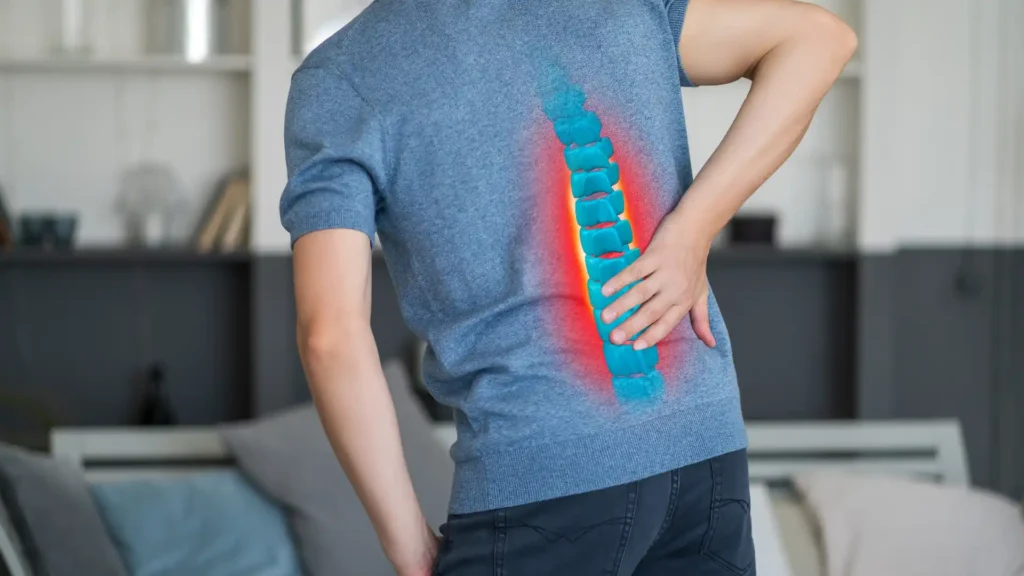Back pain is one of the most common reasons veterans apply for VA disability benefits, but getting approved is not always easy. The VA often denies these claims, stating there is insufficient medical evidence to support the claim or a clear link between the condition and military service is lacking. This can be incredibly frustrating, especially when your back pain affects your daily life.
If you are dealing with chronic back pain and believe it is connected to your service, understanding how to prove service connection is essential. This guide covers how to approach the claims process, the types of evidence that can support your case, and how the VA assigns a disability rating once your condition is verified.
Can Veterans Get VA Disability for Back Pain?
Yes, veterans can receive VA disability benefits for back pain—but only if they can prove the condition is connected to their military service. This connection may result from a specific incident, like a fall during a training exercise, or it could stem from years of physically demanding tasks, such as heavy lifting, rucking, or repeated strain on the spine. Establishing this link is the key to getting your claim approved.
Many veterans suffer from conditions such as:
- Lumbar spine injuries
- Thoracic spine pain
- Degenerative disc disease
- Sciatica or nerve compression
Even if your back pain did not begin while you were still in uniform, you might still qualify for benefits if symptoms appeared shortly after discharge or an already service-connected injury contributed to the problem. For example, secondary claims are often approved when issues like knee, hip, or ankle injuries lead to an altered gait or posture that strains the back. Regardless of the cause, you, the veteran, are responsible for submitting strong medical evidence.
How to Establish Service Connection for Back Pain
To win your claim, you need to meet three basic criteria:
- A current diagnosis
- An in-service event, injury, or illness
- A medical nexus connecting the two
Here’s how to strengthen each part of your case.
Provide a Clear Diagnosis
A simple complaint of back pain will not qualify. You must have an official diagnosis, like a herniated disc or degenerative disc disease, clearly documented in your VA or private medical records to support your claim.
Prove the Injury or Strain Happened During Service
This process typically relies on your military medical records, service treatment records, or documented duty logs. However, even if you did not report the injury then, statements from fellow service members (known as buddy statements) can help support your account and fill in the gaps. These personal accounts can be advantageous if your back pain wasn’t officially documented during service.
Think back to moments when you may have injured or strained your back, such as:
- Carrying heavy gear
- Repetitive physical activity
- Improvised sleeping arrangements
- Combat-related incidents or vehicle accidents
You can also reference any functional limitations you experienced due to back pain while on active duty, even if a formal diagnosis did not come until later.
Build a Strong Nexus
This step connects your back condition to military service through a medical nexus. During a C&P exam for back pain, a VA doctor must state that it is “at least as likely as not” that your condition is service-related. Alternatively, you can submit a nexus letter from a private physician, which should reference your medical history, explain how the condition developed, and clearly outline the medical reasoning behind the connection.
If your back issues developed after a service-connected leg, hip, or foot injury, they may qualify as a secondary condition, and still make you eligible for VA benefits.
VA Ratings for Back Pain
 Once you have proven your back pain is service-connected, the VA assigns a rating based on how much it limits your movement or daily life.
Once you have proven your back pain is service-connected, the VA assigns a rating based on how much it limits your movement or daily life.
The VA rating for back pain typically falls between 10% and 60%, depending on the severity of your symptoms. The rating is based on:
- Range of motion (measured during a C&P exam)
- Frequency and duration of flare-ups
- Impact on work and mobility
- Pain during movement
- Doctor-documented evidence of muscle spasms or guarding
Conditions like degenerative disc disease or intervertebral disc syndrome may also receive higher ratings if there are periods of incapacitation, meaning you were prescribed bed rest by a physician.
A few tips to strengthen your case:
- Mention if you use mobility aids (canes, braces)
- Document the time lost from work due to back pain
- Note if the pain radiates to your legs or causes numbness
The more evidence you provide, especially medical documentation, the more likely you are to receive a fair rating.
What If Your Claim Gets Denied?
Many veterans have their initial claims denied because of missing documentation or unclear service connections. Do not get discouraged if your claim is denied—you have options. You can file a supplemental claim with more substantial evidence or appeal the decision through the proper channels.
Working with a law firm focusing on VA disability claims can make a big difference. These attorneys know how to identify weak points in your file, gather the proper medical evidence, and build a persuasive case. They are also experienced in challenging unfair VA decisions and guiding you through each step of the appeals process with focused legal support.
Get Help Proving Your Back Pain Is Service-Connected
Proving a service connection for back pain is possible, but it takes more than reporting your symptoms. You need detailed medical records, documentation of your in-service injury, and a clear link between the two.
If you struggle to get the VA to recognize your back pain as service-connected, VetLaw can help. Our legal team focuses only on veterans’ disability claims, and we have helped countless veterans overcome frustrating VA denials.
To speak with an experienced attorney, fill out our contact form or call (336) 355-8387. You can also learn more about how we handle back injury VA claims.
Do not wait to get the help you need. Let’s take the next step toward getting your condition recognized.







